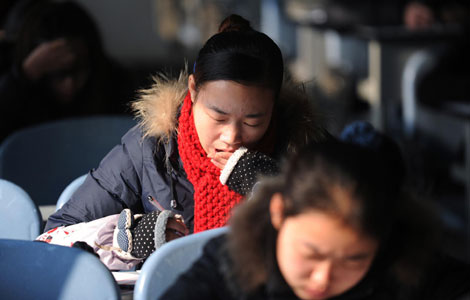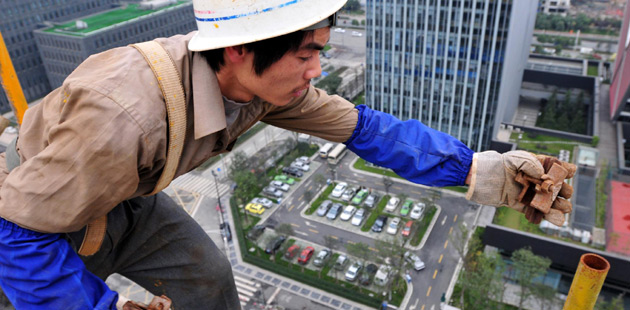Hu praises space docking
Updated: 2011-12-17 09:13
(China Daily)
|
|||||||||||
BEIJING - President Hu Jintao promoted independent innovation in a speech he gave at a rally on Friday to celebrate the country's first successful space-docking mission.
After lifting off on Nov 1 from the Jiuquan Satellite Launch Center, the unmanned Shenzhou-VIII spacecraft rendezvoused and docked twice with the unmanned space lab module Tiangong-1, which had been launched from the same site on Sept 29.
Experts said the mission had paved the way for China's plan to assemble a space station around 2020.
Hu said the successful docking mission was "a milestone" among China's manned space flights.
"This glorious achievement has strengthened the national cohesion and confidence of all of the Chinese people," he said.
Looking back at the past 19 years of manned space flights, he said large engineering projects can have a strong influence on the country's economic and social development.
Hu said Chinese space scientists and engineers had many breakthroughs during those years. They came in unmanned tests of space equipment, in manned space missions, in missions in which astronauts performed tasks outside of spacecraft and in space docking.
"To achieve comprehensive advancements in the economy, science and technology, we will concentrate our resources on important projects concerning national security and people's livelihoods," he said.
Since 1999, China has launched five unmanned and three manned Shenzhou spacecraft. The latter missions put six astronauts in space. China is the third nation in history to have independently sent men into space, following the Soviet Union and the United States.
China has mastered the use of technology needed for three essential tasks in manned space flights: transporting astronauts to space and back, allowing them to work outside of spacecraft and getting spacecraft to meet and dock.
Even though the country's space program has made progress, Hu said the technology found in China, as well as the country's ability to innovate on its own, lags far behind world standards.
"We must have a sense of urgency and crisis," Hu said.
"We must improve our capability for original innovation and integrate innovation and re-innovation by digesting technologies that have been introduced to us to transform our economy and society so that they are driven by innovation."
Chang Wanquan, chief commander of the manned space program, said independent innovation is the foundation of the manned space program and innovation cannot take place in the absence of talented workers.
He said 85 percent of the engineering designers who work for the mission are younger than 35 and that they will be able to work on plans far into the future.
Around 2020, China plans to assemble a 60-ton space station in orbit. A space laboratory is to be built by 2016 to test whether such a feat can be performed.
So that China can accomplish its goals, it still needs to learn techniques used to recover water and oxygen, produce solar energy on a large scale, control extreme temperatures, build something on so large a scale and operate it for a long time, experts have said.
To give China further opportunities to perfect space docking, two more Shenzhou vehicles - at least one that will be manned- will be launched next year to dock with Tiangong-1 while it is in orbit.
"The Chinese people are willing to walk hand-in-hand with people from around the world to explore space in peaceful ways and strengthen international cooperation on space technology," Hu said.
Xinhua - China Daily
Hot Topics
HIV/AIDS, Egypt protest, Thanksgiving, climate change, global economic recovery, home prices, high-speed railways, school bus safety, Libya situation, Weekly photos
Editor's Picks

|

|

|

|

|

|







